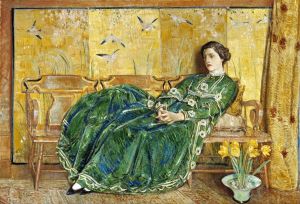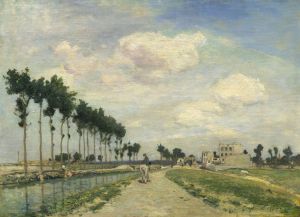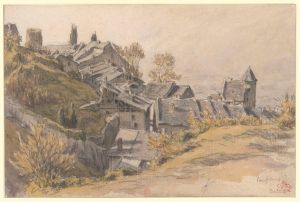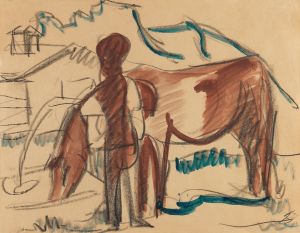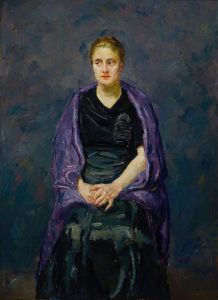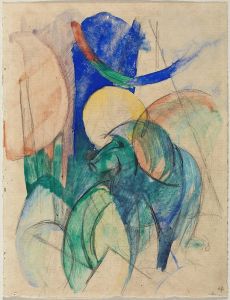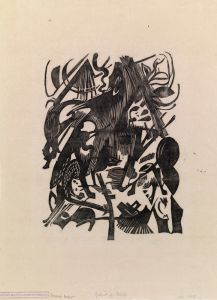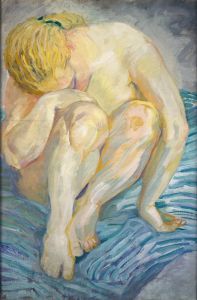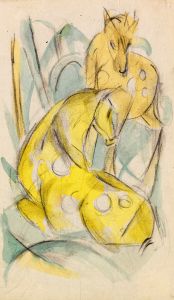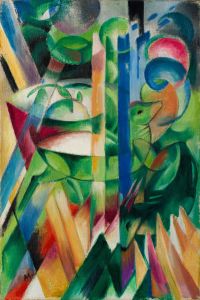
Schlafende Hirtin
A hand-painted replica of Franz Marc’s masterpiece Schlafende Hirtin, meticulously crafted by professional artists to capture the true essence of the original. Each piece is created with museum-quality canvas and rare mineral pigments, carefully painted by experienced artists with delicate brushstrokes and rich, layered colors to perfectly recreate the texture of the original artwork. Unlike machine-printed reproductions, this hand-painted version brings the painting to life, infused with the artist’s emotions and skill in every stroke. Whether for personal collection or home decoration, it instantly elevates the artistic atmosphere of any space.
"Schlafende Hirtin" (Sleeping Shepherdess) is a painting by the German Expressionist artist Franz Marc, created in 1912. Marc is renowned for his vivid use of color and his depictions of animals, which he often imbued with symbolic meaning. He was a key figure in the German Expressionist movement and a founding member of the art group Der Blaue Reiter (The Blue Rider), which sought to express spiritual truths through art.
"Schlafende Hirtin" is an exemplary work that showcases Marc's distinctive style and thematic concerns. The painting depicts a shepherdess lying asleep in a natural setting, surrounded by a landscape that is rendered in bold, vibrant colors. The use of color in this painting is particularly significant, as Marc believed that different colors had specific spiritual and emotional connotations. For instance, he often used blue to symbolize spirituality and yellow to represent joy and femininity.
In "Schlafende Hirtin," the shepherdess is depicted in a serene and peaceful state, suggesting a harmonious relationship with nature. This theme of unity with nature is a recurring motif in Marc's work, reflecting his belief in the interconnectedness of all living things. The landscape around the shepherdess is stylized and abstract, with simplified forms and dynamic lines that convey a sense of movement and energy. This approach is characteristic of Marc's work during this period, as he sought to move away from realistic representation and towards a more abstract and expressive style.
Franz Marc's work was heavily influenced by his interest in philosophy and spirituality, particularly the writings of Friedrich Nietzsche and theosophy. He believed that art should transcend the material world and reveal deeper spiritual truths. This belief is evident in "Schlafende Hirtin," where the dreamlike quality of the scene invites viewers to contemplate the deeper connections between humanity and nature.
Marc's career was tragically cut short by his death in World War I in 1916, but his work has continued to be celebrated for its innovative use of color and form, as well as its profound spiritual and philosophical depth. "Schlafende Hirtin" remains an important example of his artistic vision and his contributions to the Expressionist movement.
The painting is housed in the Städtische Galerie im Lenbachhaus in Munich, Germany, which holds one of the most significant collections of works by Franz Marc and other members of Der Blaue Reiter. The Lenbachhaus is renowned for its extensive collection of modern art, particularly German Expressionism, and continues to be a major center for the study and appreciation of Marc's work.
In summary, "Schlafende Hirtin" by Franz Marc is a significant work that exemplifies the artist's unique style and thematic preoccupations. Through its vibrant colors, abstract forms, and spiritual undertones, the painting invites viewers to explore the profound connections between humanity and the natural world.





